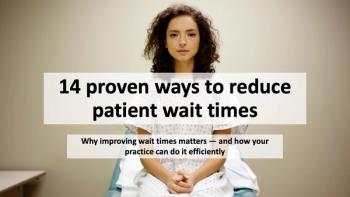
Basic Technology Marketing Moves Physicians Must Implement
Many medical practices continue to overlook technology marketing basics, a fatal mistake in an era of increased competition and decreasing reimbursement.
Many medical practices continue to overlook marketing basics, a fatal mistake in an era of increased competition and decreasing reimbursement. We’ve previously discussed the importance of
I recently experienced this firsthand while helping a family member locate a new primary-care doctor. I do a lot of research on the Internet and use it as a tool every day. I consider myself an experienced user; you’ll see why this important in a moment.
I started with the basics, and used Google to search the type of doctor and the zip code. I used one of the names that had the right qualifications, looked her up, found a number of positive peer and patient ratings and no history of disciplinary actions; I had found our new doctor! Unfortunately, neither she nor her practice had any current listings or a website I could find by searching her name and I searched many listings and called three separate practices to track her down. The search and contact process took more than 30 minutes. Later, when I could laugh about it I did several other searches for various specialists and had similar results.
How easy would it be to find your practice if a patient searched in a similar way, or worse, by city, where the number of competing listings is exponentially larger and more confusing? How long, and with what degree of computer savvy, would you expect the average consumer to look? Below is a list of low- or no-cost, basic technology marketing moves every medical practice must implement. In many cases, these tasks can be outsourced and your website can go up in just a few days for a very small amount of money (and often include the creation of free basics like Facebook, Twitter, and LinkedIn company pages).
1. Have a website; don’t wait for the perfect "someday." Yes, the best custom websites can cost thousands of dollars and have custom video, are interactive, etc., but a basic website that lists the name of the practice, the physicians, specialties, and even basics like hours and a phone number can be purchased “turn-key” from various online providers for less than $100. Further, most only require a simple e-mail with the information you want listed. If you’re willing to do a little more work, they will create multiple pages with bios and patient information and can even add things like simple links to other sites where the individual physicians have positive reviews. The excuse that a website costs too much and takes too much time is not valid.
2. Fill out your
3. Make sure your website is mobile optimized. Nearly 50 percent of all
4. Fill out and update your practice’s informationon various
5. Make the office ground zero for your marketing. Every patient is a possible referral source, so concentrate on the patient experience with staff training, maintaining appointment schedules (late doctors are always a top complaint with patients), and other small, subjective human elements that patients often feel and talk about to others as much or more than the care itself. Is your patient experience calm and reassuring or a hassle?
6. Make your expertise known. If you are like many of the successful doctors I work with you are integrated into the community and have simple materials like a professional bio and practice overview available that has been distributed to local media, healthcare organizations, and the medical and healthcare reporters in your region. You can’t be called on as an expert source in a healthcare story, for instance, if no one knows you exist.
Newsletter
Optimize your practice with the Physicians Practice newsletter, offering management pearls, leadership tips, and business strategies tailored for practice administrators and physicians of any specialty.








